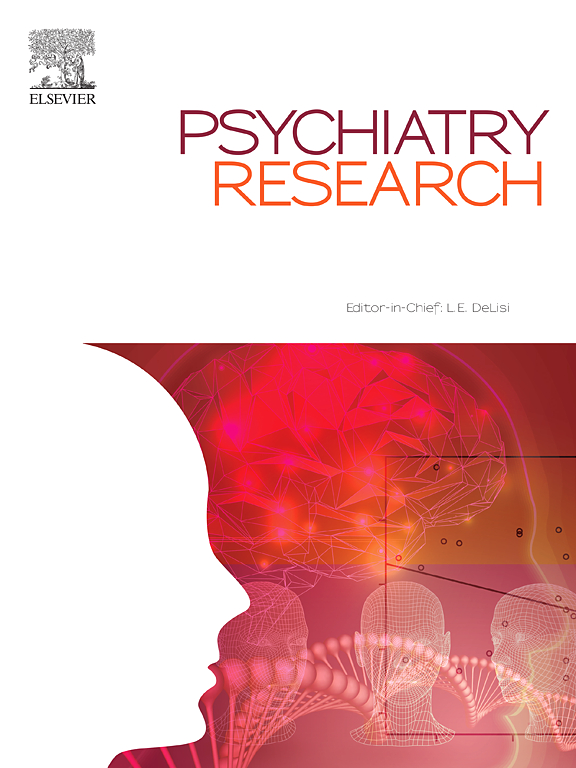Gut microbiota causes depressive phenotype by modulating glycerophospholipid and sphingolipid metabolism via the gut-brain axis
IF 4.2
2区 医学
Q1 PSYCHIATRY
引用次数: 0
Abstract
Emerging evidence suggests that changes in the gut microbiota (GM) are related to prenatal depression onset, but the underlying molecular mechanisms remain obscure. This study was conducted to explore how disordered GM is involved in the onset of prenatal depression through the microbiome-gut-brain (MGB) axis. We transplanted fecal microbiota from women with and without prenatal depression into germ-free mice. Fecal metagenomic sequencing and LC-MS untargeted metabolomics analysis were performed to identify the GM composition, function, and metabolites in mice. Lipid metabolomics analysis was then used to characterize the lipid metabolism of brain tissue in mice. We found that mice transplanted with fecal microbiota from women with prenatal depression exhibited depressive-like behaviors as well as characteristic disorders of the phylum Firmicutes. Weighted Gene Correlation Network Analysis identified three microbial and one metabolic module in the gut, alongside two lipid metabolic modules in the brain, as significantly related to all depressive-like behaviors. These modules were enriched for glycerophospholipid and sphingolipid metabolism. In addition, the GM of mice with depressive-like behaviors were enriched and deficient in relevant functions and enzymes in the glycerophospholipid (mainly phosphatidylethanolamine) and sphingolipid (mainly hexosyl-ceramide) metabolic pathways, respectively. Consistently, glycerophospholipid and sphingolipid metabolites in the brains of depressive-like mice were up- and down-regulated. Increased phosphatidylethanolamine and decreased hexosyl-ceramide were significantly related to differential genera in the gut. Collectively, our findings provide a novel microbial and metabolic framework for understanding the role of the MGB axis in prenatal depression, indicating that the GM may be involved in the onset of depressive phenotypes by modulating central glycerophospholipid and sphingolipid metabolic homeostasis.
求助全文
约1分钟内获得全文
求助全文
来源期刊

Psychiatry Research
医学-精神病学
CiteScore
17.40
自引率
1.80%
发文量
527
审稿时长
57 days
期刊介绍:
Psychiatry Research offers swift publication of comprehensive research reports and reviews within the field of psychiatry.
The scope of the journal encompasses:
Biochemical, physiological, neuroanatomic, genetic, neurocognitive, and psychosocial determinants of psychiatric disorders.
Diagnostic assessments of psychiatric disorders.
Evaluations that pursue hypotheses about the cause or causes of psychiatric diseases.
Evaluations of pharmacologic and non-pharmacologic psychiatric treatments.
Basic neuroscience studies related to animal or neurochemical models for psychiatric disorders.
Methodological advances, such as instrumentation, clinical scales, and assays directly applicable to psychiatric research.
 求助内容:
求助内容: 应助结果提醒方式:
应助结果提醒方式:


